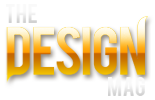Setting Up A Webstie For Novices
If you need to set up a website, you probably think it will be much harder than it is. With the internet being as prevalent as it is, almost everyone has their own online platform! You may have browsed other places to find information on web building. Don’t worry if you only found a load of cryptic jargon! Here, I’m going to help you through the process in an easy-to-follow way.
Let’s start off with hosting. Hosting is like rent for your website. A landlord deals with certain tax and utility matters. Similarly, your web host will make sure you have all the functional resources you need for your site. Hosting makes use of a web server. This is where you’ll upload all of the text, images, documents and anything else you want people to access. There are a variety of hosting options you can choose from. You might have already been drawn in by companies which offer free hosting. There are usually a lot of drawbacks to this. First of all, many of these services are only “free” by name. They’ll let you create the skeleton of a site, but charge you for other helpful features. If you do find a hosting service which is completely free, then it’s likely to be of general poor quality. Here are more resources to help you set up a set up a website. This site offers hosting reviews and many other helpful things.

Image from Pixabay
After you’ve chosen your hosting package, you’ll need to register a domain name. This is the URL of your site; what people will type into the address bar to get to your page. In many cases, your web host will also offer a domain registration service. However, you probably won’t want to pay out for a poor domain name. Your website address can be a huge branding tool, especially if you’re running an online business. Having one short phrase followed by .com will help people remember it. If you’re giving your target audience a long script full of dashes, slashes and dots, your traffic will suffer. Don’t panic though. Domain names usually only range between £4 and £20 per year.
After the previous two steps, take some time to plan your site out. What is the main function of your site? Is it mainly to give your customers information? An Ecommerce store? Are you a non-profit entity trying to raise awareness for something? The base function of your site will factor heavily in all other design choices. Make your site as big or as small as is necessary, but consider the user’s experience with every decision. The one thing all sites should have is a smooth, simple navigation. You see all those tabs at the top of this page? Those are probably the most foolproof way of showing your users around. Keep categories broad information concise.
After these three steps, you’ll be on your way to the site you’ve been dreaming of. My last piece of advice is not to leave your site alone. The internet is constantly changing, and your site will have to too!



